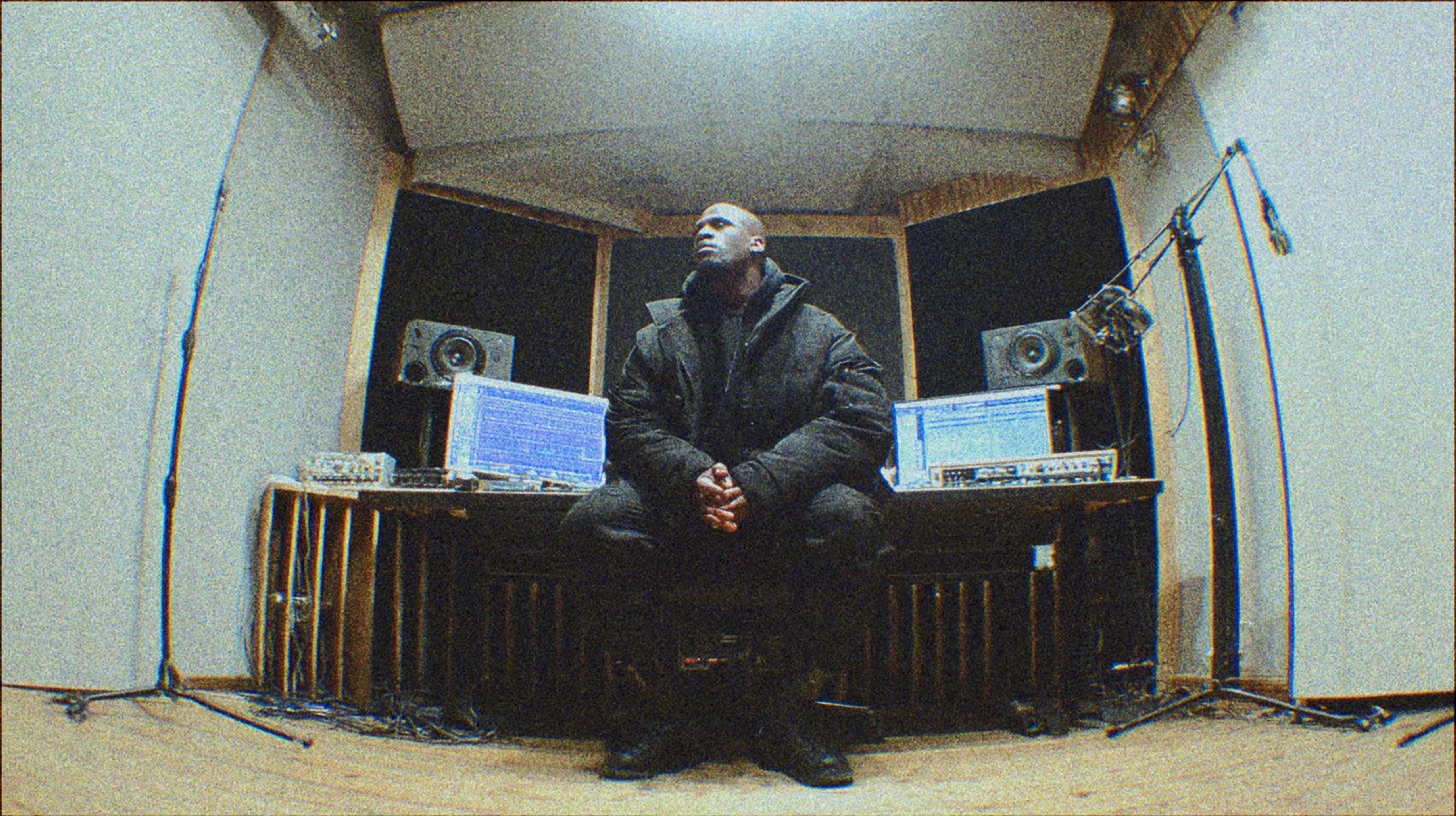
How Tim Henson is redefining modern metal guitar
Nail The Mix Staff
Tim Henson. The name alone probably conjures up images of mind-bending Polyphia riffs, impossible-looking finger contortions, and a guitar tone that’s as unique as his playing. The dude is undeniably a force in modern guitar. And yeah, he’s got cool gear – his Ibanez signature models like the TOD10N nylon and FRH10N, those Fishman Fluence pickups, and of course, his Neural DSP Archetype: Tim Henson plugin.
But if you think that the secret to his sound, or the insane skill level of modern guitarists in general, is just about accumulating the latest Axe-Fx III, Quad Cortex, or boutique pedals, you’re missing a massive piece of the puzzle. We’re swimming in amazing gear, no doubt. But there’s a deeper reason why guitarists in 2025 (and beyond) are hitting new heights of precision, creativity, and accuracy.
Beyond the Gear: The Modern Guitarist’s Mindset
Let’s be real, we all love geeking out over a new plugin or a sweet new amp modeler. But how many times have you seen someone (or been that someone) grab a new piece of kit, feel inspired for a week, then hit a wall because, fundamentally, they don’t sound any better? It’s a common cycle.
The truth is, the real game-changer isn’t just the tools. It’s a fundamental shift in mindset. There’s a new level of dedication to the craft itself, especially when it comes to rhythm and precision. This isn’t about using low tunings or complex plugins to cover up sloppy playing; the best modern players are leveraging these tools on top of rock-solid musicianship. They’re not crutches; they’re extensions of their skill.
Think about it: the old distinctions between “lead” and “rhythm” players are blurring. The most jaw-dropping soloists these days are often the tightest riff-machines too. Being an all-around killer guitarist is becoming the baseline.
Tim Henson: The Embodiment of the New School
Tim Henson is a prime example of this new breed. His playing isn’t just technically dazzling; it’s a melting pot of influences and an obsessive attention to detail.
Unconventional Influences: The Internet’s Gift
One of the coolest things about Henson is where he draws inspiration from. He’s been upfront about listening to artists like Taylor Swift and working with hip-hop producers. And if you listen closely to Polyphia, you can hear it – those catchy, almost pop-like melodic hooks woven into complex instrumental tapestries.
His technique is also a testament to this. That signature thumping, slapping, and delicate fingerstyle often draws more from flamenco and classical guitar than traditional metal shred. Think about his extensive use of hybrid picking – a technique that wasn’t exactly standard metal fare a decade ago. Thanks to the internet, players can see someone like Tim do something wild, it goes viral, and suddenly guitarists everywhere are dissecting it and learning. Back in the day, if you wanted to learn flamenco, you needed a flamenco teacher. Now, that knowledge is a click away, ready to be fused with anything.
God-Tier Rhythmic Precision
Polyphia’s music is built on a bedrock of insane rhythmic interplay. It’s not just fast; it’s surgically accurate. Every note, every ghost note, every percussive hit on the strings feels intentional and locked in. This mirrors a broader trend in modern metal – bands like Meshuggah, Gojira, and Periphery have set an unbelievably high bar for rhythmic tightness.
This isn’t just about playing fast to a click. It’s about deeply internalizing the pulse, mastering subdivisions (your 16ths, 32nds, triplets, you name it), and having the mechanical skill to execute flawlessly, often across multiple instruments in perfect sync.
Leveraging Technology for Artistry (Not as a Crutch)
Sure, Henson uses cutting-edge gear. His Neural DSP Archetype plugin is a testament to how well he understands tone-crafting in the digital realm. His Ibanez signature guitars are designed for his specific ergonomic and sonic needs, often featuring unique elements like the “Tree of Death” inlay or thinline nylon designs. He might use a DigiTech Whammy for those signature pitch-bends or sophisticated delays that sound like a Soundtoys Crystallizer on steroids.
But all this tech serves his artistic vision. It allows him to explore new sonic textures and execute his complex ideas. It’s not about finding a preset that makes him sound good; it’s about having tools that can keep up with his creativity and precision.
How YOU Can Cultivate Henson-Level Dedication (Okay, Maybe Not That Level, But You Get It)
So, how do you tap into this modern guitarist mindset? It’s about shifting focus from pure gear acquisition to skill acquisition, with a heavy emphasis on rhythm and critical self-analysis.
Your DAW: The Ultimate Practice & Analysis Tool
Your DAW – whether it’s Pro Tools, Reaper, Cubase, Logic Pro X, or Ableton Live – isn’t just for recording your next banger. It’s one of the most powerful practice tools you own. Here’s a simple but brutal exercise:
- Pick a riff: Something you think you can play pretty well.
- Set up a clear click track: Make sure you can hear it distinctly over your playing.
- Record yourself: One or two takes, no punches, no edits. Get an honest assessment.
- Analyze the waveforms: Don’t just listen back. Zoom way in. Look at your transients (those initial sharp peaks of the waveform) against the grid lines. Are they consistently ahead? Behind? All over the place?
This isn’t about being 100% perfectly on the grid every single time. It’s about becoming aware of your tendencies. Are your 16th notes rushing? Are your chugs dragging? This instant feedback is gold. The best players are constantly recording themselves and critically listening.
Why Tight Playing is a Mixing Game-Changer
This dedication to precision isn’t just for bragging rights. It makes everything in production easier and sound better.
When guitars are tight:
- They stack beautifully: You get that massive, clear wall of sound without it turning into a muddy, chaotic mess. Quad-tracking (or even just dual-tracking) sounds powerful, not phasey and sloppy.
- DI tracks are gold: A precise DI track means your reamps, whether through an amp sim like Henson’s Archetype, a Fortin Nameless Suite, or a real beast like an EVH 5150, will sound articulate and punchy.
- EQing is a dream: You’re carving and enhancing, not performing emergency surgery to fix a performance. There’s less mud to fight, more clarity to reveal. For more on getting your EQs right, check out our EQ Strategies for Mixing Modern Metal.
- Compression works with you: Instead of desperately trying to even out a sloppy dynamic range, compressors (like a classic 1176-style plugin on individual tracks or an SSL-style bus compressor on your guitar bus) will enhance the punch and sustain of your already solid playing. Dive deeper into Metal Compression Secrets.
- Editing becomes minimal: You’re saving hours you might otherwise spend nudging notes or trying to quantize a performance beyond recognition.
This is something we see constantly on Nail The Mix. When we get multitracks from bands like Arkspire or a classic like Meshuggah, the raw performances are already incredibly tight. The mix engineer’s job is to enhance that power, not create it from scratch with editing tricks.
It’s Not Just About Metal Anymore (Thanks, Tim!)
Players like Tim Henson are a huge part of why the “rules” of genre are getting blurrier. His fusion of flamenco, jazz, pop, and electronic sensibilities into a progressive, guitar-driven framework is inspiring a new generation to look beyond traditional boundaries.
This means that as producers and mixers, we need to be ready for anything. Understanding how to make these diverse elements shine, how to blend a nylon-string guitar with a saturated 8-string, or how to make hyper-clean, compressed tones feel percussive and powerful, is becoming increasingly important.
Level Up Your Own Productions: The Nail The Mix Edge
Achieving that incredible rhythmic precision and crafting tones that perfectly serve such intricate, genre-bending playing is a serious undertaking. But what happens after you’ve tracked those killer parts? How do you make them hit like a sledgehammer in the mix?
That’s where Nail The Mix comes in. If you’re inspired by the precision and innovation of players like Tim Henson and want to learn how to make your own tightly-played tracks sound absolutely massive and professional, you’re in the right place.
Imagine being a fly on the wall as world-class producers mix songs from bands with this level of musicianship. You get to see exactly how they:
- Process DI guitars that are already incredibly tight.
- Use EQ, compression, saturation, and effects to enhance, not fix.
- Make every intricate detail audible and impactful.
- Get those guitars to sit perfectly with thunderous drums and a powerful low end.
At Nail The Mix, you get access to the actual multitracks from huge metal songs and watch the original producers mix them from scratch, explaining every decision along the way. This isn’t about learning to polish a turd; it’s about learning to elevate already great performances to legendary status.
Ready to see how the pros do it? Unlock Your Sound and Mix Modern Metal Beyond Presets.
The Takeaway
Tim Henson is a phenomenal guitarist, not just because he can play incredibly complex music, but because he represents a broader shift: a relentless dedication to precision, a fearless embrace of diverse influences (thank you, internet!), and the smart application of technology as an artistic tool.
So, while that new signature plugin or 9-string guitar might be tempting, remember that the real magic happens when stellar musicianship meets skillful production. Focus on your fundamentals, use your DAW to get brutally honest with your playing, and keep pushing your creative boundaries. The power to get ridiculously good is all out there. What non-metal influences are you bringing into your music?
Get a new set of multi-tracks every month from a world-class artist, a livestream with the producer who mixed it, 100+ tutorials, our exclusive plugins and more
Get Started for $1





